IT168 evaluation Asus's position in the personal computer field is obvious to all, and its player country brand is also a symbol of flagship positioning and solid quality, becoming the first choice for many users. As consumers become more rational and their brand awareness is becoming increasingly strong, Asustek naturally hopes to extend this brand image to the mobile phone business. Therefore, improving product lines, laying channels, and launching flagship products have become the strategic focus of ASUS' mobile business. ZenFone3 launched in January is the practitioner of this strategy.

ASUS ZenFone3 totaled four products, namely ZenFone3 Smart, ZenFone3, ZenFone3 and ZenFone3. Each of the four products has a distinct selling point. The evaluation of the ZenFone3 Monarch is quite special, the configuration of the world's first launch equipped with Xiaolong 821 processor, supplemented by 6GB +256GB of storage; appearance of a breakthrough in the use of hidden antenna design, with a more pure and beautiful metal body, It is definitely a machine-level product. Here we evaluate to help you understand if the ASUS ZenFone3 Monarch's emperor configuration is worthy of a name.
For the understanding of the aircraft emperor, we first start from the configuration, as the world's first model of the Xiaolong 821, its configuration highlights quite a lot, through a simple form to understand.
ASUS ZenFone 3 Monsters main parameters operating system save 3.0Network standard full Netcom, dual card dual standby body size 156.4 77.4 7.5 mm
Weight 172g Screen 5.7 inch 19201080 resolution Super AMOLED screen camera 23 million pixels F/2.0 aperture, support for laser focusing processor Qualcomm Snapdragon 821 Body memory RAM: 6GB ROM: 256GB (supports expansion) Features Hi-Res authentication, fingerprint Recognition battery 3000mAh, support QC 3.0 fast charging body color gold listing price 4999 yuan View
For this model, we briefly read from the following perspectives.
1, the flagship configuration, the first Snapdragon 821, 6GB +256GB of storage portfolio, called luxury, equipped with a 5.7-inch AMOLED screen, and focus on audio and video, equipped with a new design of five magnetic speakers, support Hi- Res and DTS stereo sound effects. Applying the old Luo's golden sentence: Absolutely is the big satisfaction of the flagship configuration.
2, ASUS ZenFone 3 Monarch has adopted a one-piece all-metal body, and the use of an exclusive hidden antenna technology, so that the full blown leucorrhea can be hidden, the whole metal texture is more pure, high value face value. According to Asustek's own description, this technology actually designed the antenna on the top of the mobile phone, and it was created through more than 240 procedures, which involved a number of exclusive patents.
3, ASUS ZenFone 3 Monarch's camera configuration highlights the use of a 23 million pixel Sony sensor, optical image stabilization, equipped with a laser focusing module, combined with targeted development of three-focus system, imaging is commendable. In the super-quality mode, 92 million-pixel images can be output.
It should be said that the ASUS ZenFone 3 Monarch has given some support to its 4,999 yuan in terms of configuration. How specific performance, below we enter a detailed evaluation.
Appearance and Industrial Design
The entire Asus ZenFone 3 system has been redesigned, and both the craftsmanship and the materials have significantly improved. The highlight of the ZenFone 3 Duke is the exclusive hidden antenna design of Asustek, which makes the whole metal texture more pure. Here we will interpret this part in detail.

ASUS ZenFone 3 Monarch is more positive on the front, equipped with a 5.5-inch Full HD AMOLED screen, using ID borderless design, with a high ratio of 79% screen. At the bottom, Android's three King Kong buttons are arranged. A detail needs to be explained that ASUS has hidden concentric grating lines on the top and bottom, which are very delicate and highly recognizable against the background of light. In addition, due to the thickness and weight considerations of the entire machine, the ASUS ZenFone 3 Duke is not covered with 2.5D glass on the front.
How to build a hidden antenna?
The hidden antenna on the back is the highlight of Asustek's craftsmanship. We are familiar with the all-metal body phone, such as the iPhone 6, OPPO R9, etc., in the back there are obvious antenna injection molding tape, due to the obvious color difference with the metal material, not beautiful, the design has been criticized. Asustek adjusted the position of the antenna (designed at the top) and processed it through more than 240 processes, which made the injection molding tape on the metal surface very well hidden.
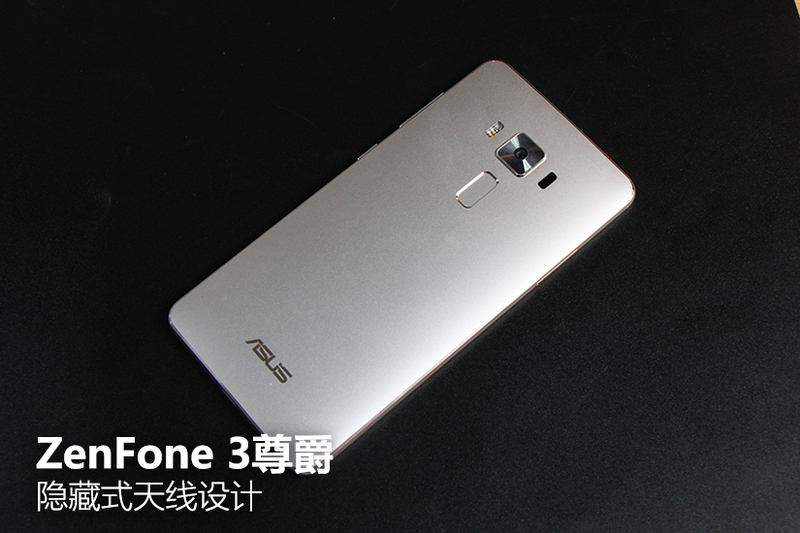
We also saw such hidden technology on the LG G5. With reference to its principle, ASUS should also cover a special primer on the surface of the injection molding tape. This primer has a similar texture to metal and has excellent The adhesion makes the injection molding tape hidden. However, the so-called hidden is not without traces, the physical boundaries are still there, and there are still traces of plastic injection on the top and bottom diamond trim.
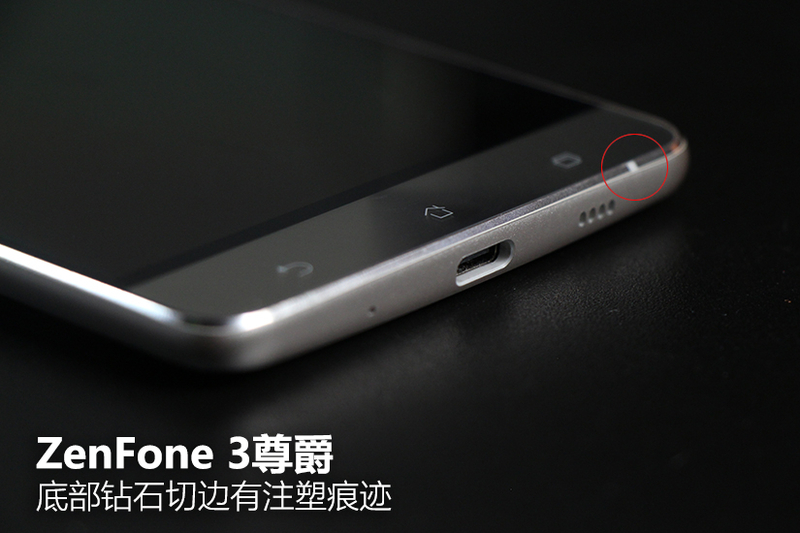
As to whether the concealed antenna signal can be normal, Asustek said that the aircraft is undergoing a rigorous signal test. With the help of Qualcomm's Truesignal technology, intelligent switching can be realized. For example, when a hand shakes a hand, it will inevitably interfere with the antenna. At this point, the chip will automatically recognize and switch the main antenna section up.
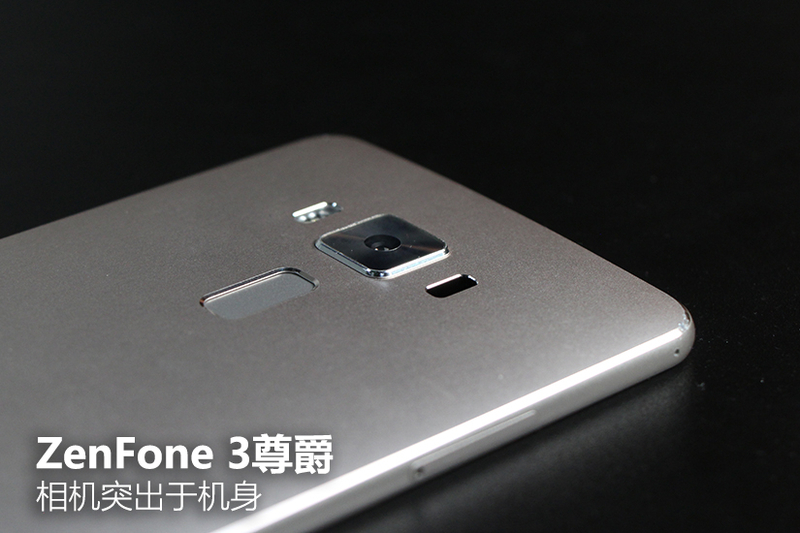
The back is equipped with a 23-megapixel main camera. The shape of Founder is prominent in the whole machine. This partly explains that the camera part has more space to accommodate more excellent camera modules and enhances the performance of the camera. The two sides are double color temperature flash and Laser focus module.

The fingerprint identification module under the camera has a unique shape, which is a narrow rounded rectangle. We also learned from the aspect of words that such a design is on the one hand designers' aesthetic considerations, and on the other hand, it is also convenient for user's fingerprints to unlock, after all, the narrow and long shape is easier to touch, even if the hands are small. The fingerprint recognition carried by this time supports functions such as secure unlocking and payment up to 0.2S.
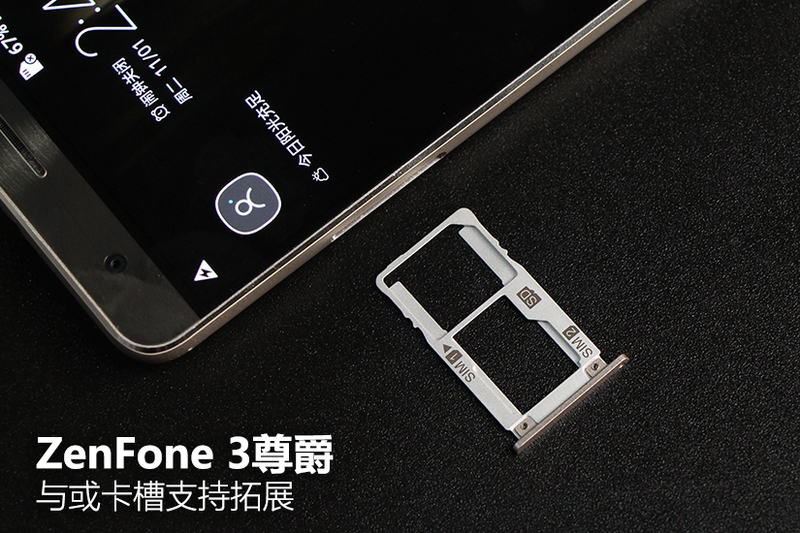
On the left side of the fuselage, a dual Nano SIM card slot and power button are integrated, and a noise-reducing microphone is placed on the side due to the aesthetic considerations of the back. The USB Type-C interface is designed at the bottom to support Qualcomm QC 3.0's fast charging standard. The speaker is located on the right side of the Type-C interface. It uses the newly designed five-magnetic speaker, which has significant advantages in volume and sound quality compared to ordinary products.
It is reported that the ZenFone3 design also has the ASUS notebook elite team to join, showing its emphasis on this product. From the final result, the design of the ZenFone 3 Monarch has a significant breakthrough compared to Asus's previous mobile phone products. The careful polishing of the hidden antenna is enough to make this product stand out.
23 million pixel camera experience
According to Asustek’s promotion, most of ZenFone 3's photographs were devoted to building, from hardware to software, and technological innovations at multiple levels were achieved, reaching the peak of the Asus mobile phones. In this section, we will make a detailed interpretation of the photography of the ZenFone 3 Monster.

As we all know, achieving good imaging effects requires a variety of coordination functions, including mirrors, photosensitive elements, ISPs, and late-stage algorithms. Asus ZenFone 3 has certain characteristics in these aspects. First, the ZenFone 3 Duke uses a Sony IMX 318 sensor. The sensor is 23 million pixels, CMOS area is 1/2.6 inch, and the unit pixel size is 1μm. It supports phase focus and three-axis electronic image stabilization.
Secondly, ASUS added a laser focusing module, and based on this, it created a three-focus focusing system that integrates contrast focus, phase focus, and laser focus to focus on a variety of light scenes, or under any light source scenario. For non-stop moving distances of moving objects, accurate and fast focus can be achieved in various dynamic and static environments. In order to enhance the quality of nighttime photography, the ZenFone 3 Monarch also incorporates four-axis optical image stabilization.
Finally, let's not forget the Spectra ISP built into the Snapdragon 821. This ISP has a very strong native processing power. With the built-in DSP, it can achieve the underlying high dynamic contrast adjustment and noise reduction processing. Based on this many products have excellent imaging performance. And the ZenFone 3 Monarch also combined its own Pixel Master technology, through post-processing, can output 92 million resolution resolution photos. The imaging power is worth looking forward to, and here we use real proofs to help everyone interpret.

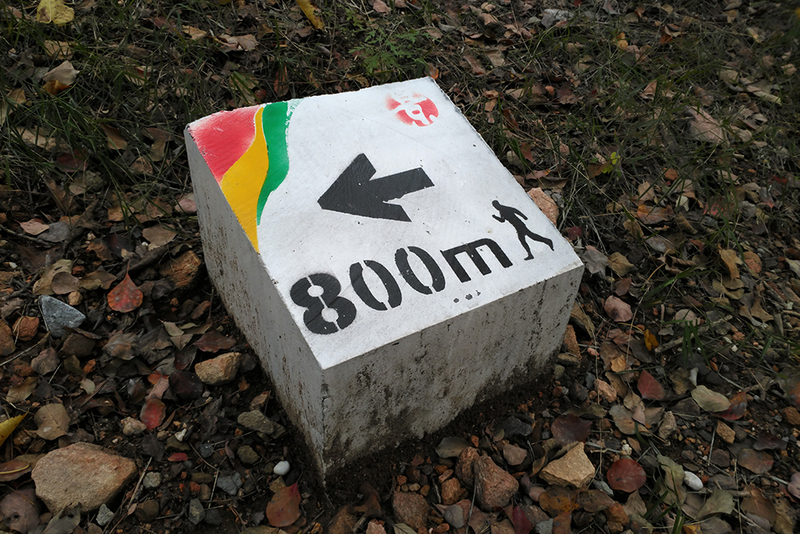


Judging from the proofs, ASUS ZenFone 3's white balance is more appealing to the eye, the first look good. In the sample of the cable car, the brightness of the sky contrasts sharply with the cable car. Thanks to Spectra ISP's high dynamic contrast adjustment, the picture's latitude is greatly improved, and the cable car's color and sky color are accurately restored, and there is no sky exposure. Lose the color details of the cable car.

The three-blind focus system's blessing is especially fast in focusing, especially in macro shooting. The ordinary mobile phone needs phase focus to achieve, and the scene is not friendly to light, and it may also trigger contrast focus. , blur a few back and forth. The ZenFone 3 intelligently judges the scene, selects the laser to focus directly on the light, and directly adjusts the focus through the distance information fed back. The speed and accuracy are guaranteed.
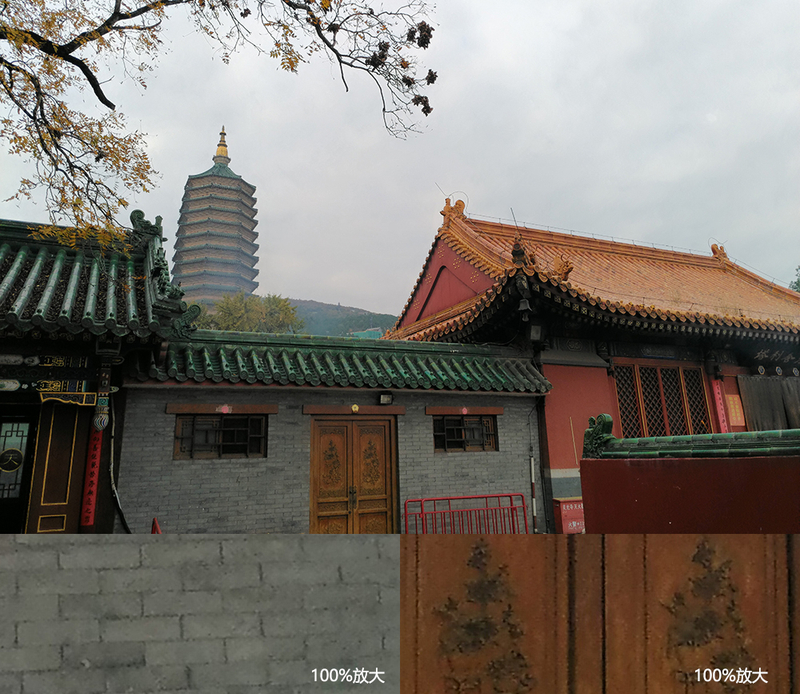
However, the picture of ASUS ZenFone 3 also has some flaws. When it is zoomed in, there are certain traces of smearing, which causes some details to be lost, and hopes to improve the algorithm in the later period.
At night, the image of ASUS ZenFone 3 has given people a good impression. After all, the night scene is particularly harsh on the test of mobile imaging. It is necessary to take care of the details of the shadows and take care of the purity of the images.

Through the proofs, we can see that the ASUS ZenFone3 Emirates relies on the F2.0 large aperture and optical image stabilization features to increase the exposure and ensure the brightness of the screen. In addition, the performance of the sky, the ASUS ZenFone3 Monarch showed a rare prime, noise control properly.
As a whole, Asustek's camera configuration for the ZenFone3 Monarch is in place, the overall experience is good, there is no problem with the daily photographs, even if there is a certain strength at night, but there is still room for improvement.
Save the child 3.0 experience
With the success of Internet mobile phone manufacturers in recent years, excellent user experience has gradually been regarded as the only way to build products. The creation of mobile phone systems is regarded as the key to providing a good user experience. The ZenFone 3 is equipped with Asus's System 3.0. It's easy to see the characteristics of the gas. Here's the author's experience to help you understand the 3.0 system.
Compared to the previous version 2.0, this provincial child 3.0 has been upgraded mainly in UI design, text messaging, and "earning +". Let's first look at the changes that have been made in the design of UI 3.0.
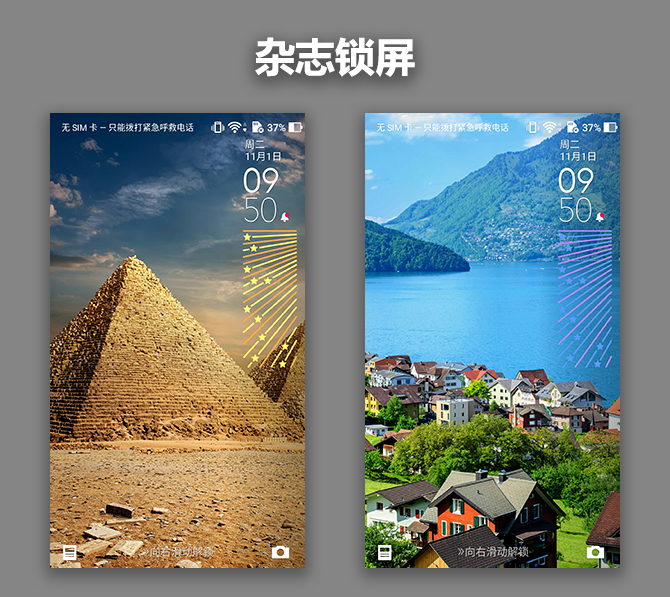
Gemini 3.0 joins the magazine lock screen, and the pictures are categorized according to topics such as "fashion", "travel", "car" and "living". Users can freely subscribe according to their own preferences. In addition, you can add a preview of the weather scene below the system time. However, the pattern of this notice is rather special. According to the official announcement, it is inspired by the depiction of the weather in Maya culture. New users may need some learning costs to adapt.
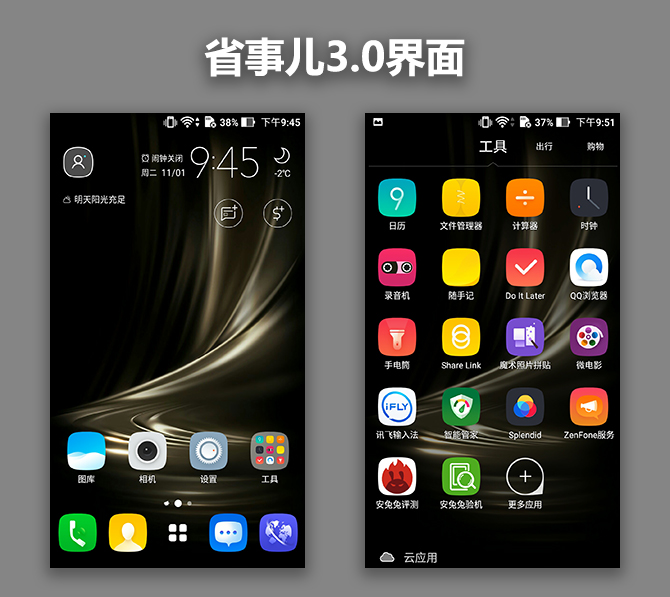
Entering the main interface of the system, the interface of the childcare 3.0 is more concise and smooth, and the widget of the date and time is more flattened. The system will place the pre-installed software in different folders according to the category, open any folder, slide left or right to switch between different folders without returning. It's a bit like the experience of placing Android secondary menus directly on the desktop. It not only simplifies the operation steps, but also facilitates inductive collation.
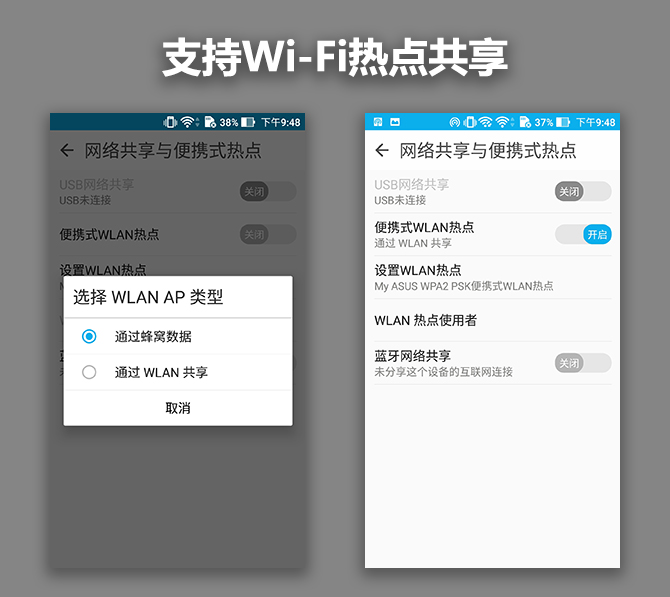
Relying on the powerful hardware of the ASUS ZenFone3 Duke, it is necessary to add a set of Wi-Fi transceiver chips to enable the system to share Wi-Fi connected to the phone. This improvement still has many practical meanings. For example, in many public places, the signal strength of the mobile Wi-Fi is stronger than that of the laptop. At this time, the Wi-Fi that is shared through the mobile phone can easily be connected to the notebook, to some extent. Freed from the hassle of public Wi-Fi secondary verification.

The SMS part is a major highlight of the 3.0 system. Asustek named it as “SMS+â€, which explains its role to a certain extent: beautifying SMS presentation and expanding the operation of SMS. The entrance of SMS+ is set under the clock on the main screen. After entering, the system will automatically display information such as train tickets, movie tickets, bank bills and other information in the form of a message card, and the main information is clear at a glance, which is convenient for management and the next operation.
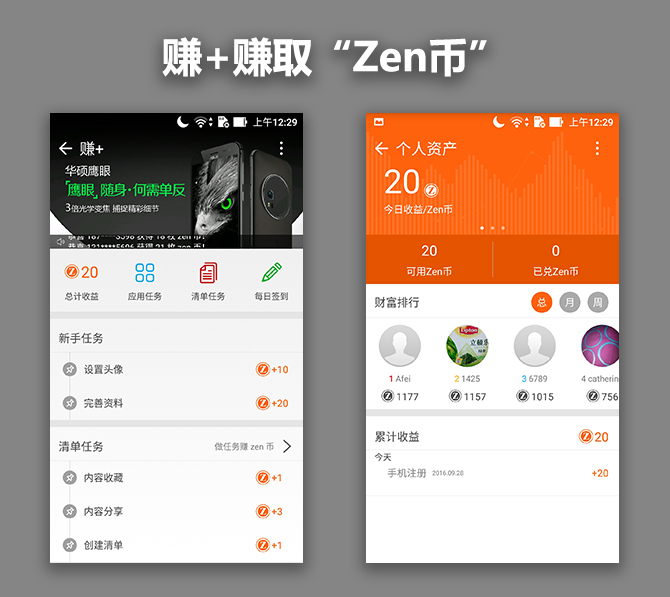
"Making +" is the biggest feature of the system. In "make +", users can complete the system's built-in tasks, such as setting avatars, column check-in and other simple and easy operations to get Zen coins, users can earn "Zen currency" in the system in exchange for a variety of Zen currency store Small gifts or direct online recharge traffic. (Note: The Zen currency is a virtual currency in the provincial system 3.0, and it can only be used in the Zen currency store according to the rules).
Overall, Asustek's System 3.0 has made some improvements in the UI. The magazine lock screen satisfies the user's individual needs. “SMS+†also facilitates the user’s information management. “Earning +†becomes more systematic. Unique features, earning virtual currency to obtain corresponding benefits, relying on hardware improvements, making Wi-Fi sharing more powerful, the overall system more convenient and intimate.
Hardware configuration interpretation
The configuration is the most praiseworthy place for this ZenFone3 dignity. The CPU uses the standard Snapdragon 821 processor, 14nm FinFET process, quad-core 2.35GHz, and a 6GB+256GB memory combination (UFS 2.0+LPDDR4). The Snapdragon 821 processor uses Qualcomm's own 64-bit Kryo microarchitecture, two large core clocks have been upgraded from the previous 2.2GHz to 2.4GHz, and two small cores have been clocked from 1.6GHz to 2.0GHz. The aspect is improved by 10%, and faster application startup speed and smoother use experience can be obtained. We also conducted a test run on the ZenFone3 Monarch, and the final result showed that the security Bunny had a running score of 154,371, which was a normal performance of the Xiaolong 821.

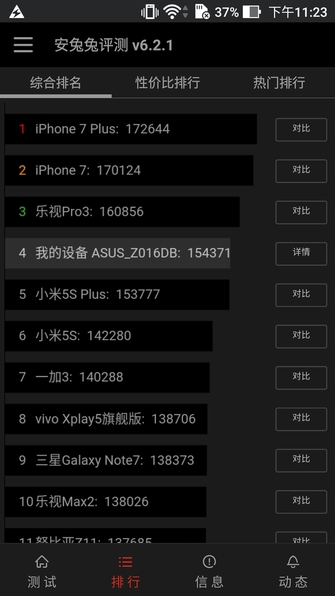
In terms of GPUs, the Adreno 530 built in the Snapdragon 821 is 40% faster in graphics processing performance, computing power, and power consumption than the previous Adreno 430, and the operating speed is also increased by 5%, and OpenGL ES 3.1+ AEP is supported. Vulkan, in the future with the game programming framework changes, the previous product will also get a good experience. With Spectra ISP, dual image signal processing capabilities have also been improved to bring more rapid focus speed, stronger low-light camera performance and higher pixel support.
Evaluation summary
As the 2016 flagship product of the year, the ASUS ZenFone3 Priest in terms of configuration is simply luxurious. Equipped with Snapdragon 821 processor, 6GB+256GB memory combination, relying on a certain amount of technology accumulation, Asustek also innovatively hides the antenna injection molding tape, making the whole metal feel more pure. In terms of cameras, the use of more sophisticated camera modules, including 23 million-pixel Sony sensor and laser focus module, combined with targeted development of three-focus system, configure a comprehensive front-run, for its price of 4999 yuan made a certain support.
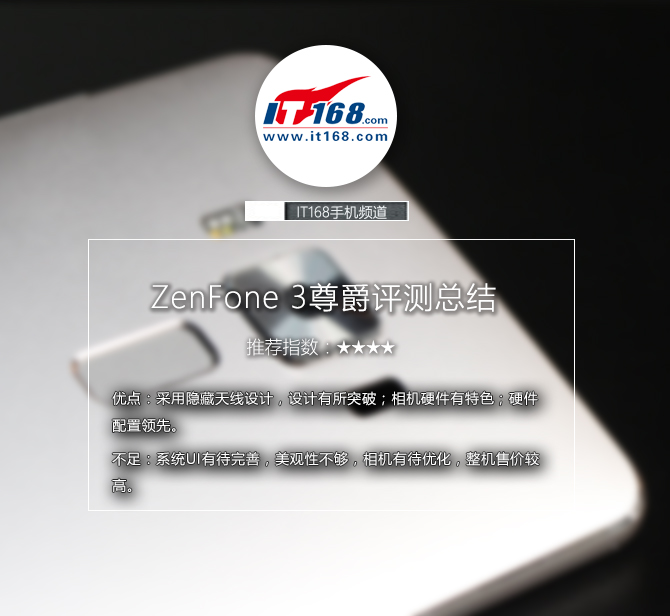
However, flagship products often do not win over absolute hardware performance, focus on the user experience, fully tap the potential of hardware, and even rely on innovation to lead the industry trend is the victory of the flagship product. From this point of view, the ASUS ZenFone3 Monarch just relied on a hidden antenna to test the chopper. It was still a distance away from mainstream flagship models such as Samsung and Apple, but it was still a powerful model, demonstrating ASUS's commitment to creating quality products. Made a determination in the field of mobile phones.
Solar water heating system is a cost-effective system for residential hot water application. This system is designed according to thermosiphon principle and operating with proportion difference between cold and hot water. The water heated by vacuum tubes is held in the stainless steel storage tank where the insulation preserves the heat.
The thermosiphon Solar Water Heater uses the sun to heat the working fluid (mostly water) in the Vacuum Tubes. The Solar Collector absorbs solar radiation, and converts the sunlight to heat and transfer it to the water. The heated water naturally rises through the solar collector into the water tank where the cooler water at the bottom of the tank is forced out and descends to the bottom of the collector (thermosiphon circulation). The circulation will be interrupted when there is no solar radiation.
Solar Panel Hot Water System,Thermal Hot Water System,Thermal Water Heater System,Solar Power Heating System
Linuo Ritter International Co.,Ltd , https://www.lnrtsolarenergy.com
